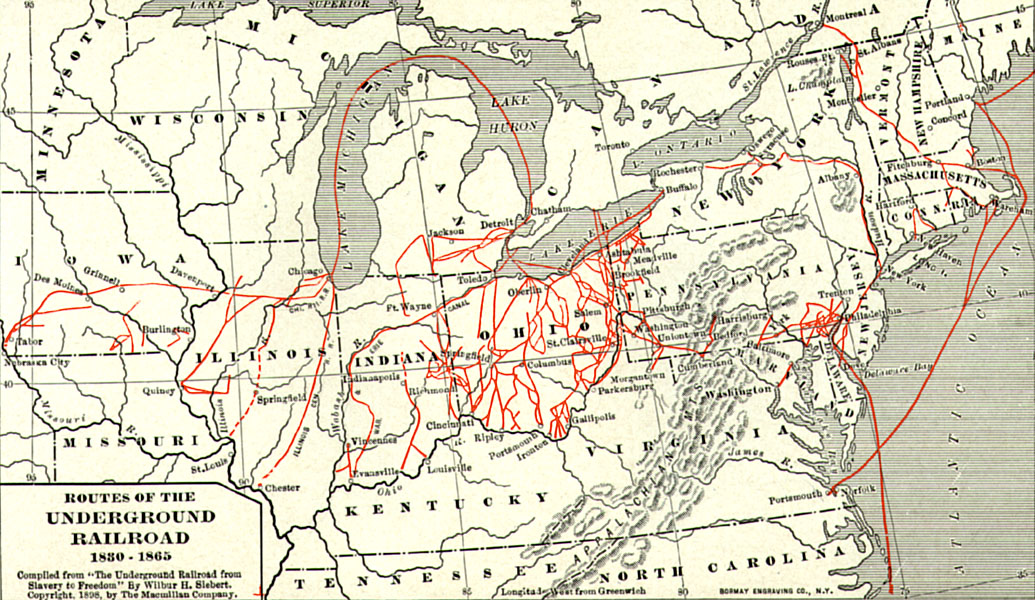What is this strange symbol painted on basement floor?
Upvote:-2
CRSouser had the right basic idea that it is a variant on an Ankh.
The symbol is almost certainly from the Theosophy movement. The basic emblem of this movement is a stick figure ankh inside of a pentagram. Sometimes this was abbreviated as just a circle with a stem and cross bar. The significance of the lower, ski-shaped crossbar I can't say, but given the time period and nature of the symbol it is highly likely there were Theosophical meetings in the house.
Upvote:1
Upvote:4
I'm surprised I'm the first to suggest this, and this is probably a bit of a stretch, but with Covington being right on the border between slave and free states, could this have marked a stop on the underground railroad? I know the construction date of the building was stated as 1900-ish so would be too new, but it mentions the concrete in the back bas*m*nt as "older" so I speculate maybe this connected to an underground chamber of some earlier building?
Passage of the 1850 Fugitive Slave Act only increased the number of slaves who not only escaped from and through Kentucky, but also continued their journey on to Canada. Several slave narratives document escapes by slaves from other Northern Kentucky communities who passed through the Covington or Newport stations on their way to Canada. -- Kentucky and the Underground Railroad

The so-called "Symbol" looks to me like a map of the Ohio river crossing. Look again at your map and note how you've drawn the river as hooking upward on the right, just as the bottom of the symbol hooks up on the right. Could this symbol really be a crude map showing how to cross the river to an area of safety? At the time, there would have been no bridges, but the vertical line might indicate a path to safety from the ferry drop-off point, across a major road to the next station on the railroad.

(source: gbot.me)
I imagine there are land records indicating who owned this property in the 1840-1860 period, and whether there were buildings on this site; if not that would disprove this theory. Also, I'm not sure whether it was common practice to lay concrete floors in bas*m*nts in that time period - they may have just been dirt floors typically; if that's true this also would blow a hole in my theory.
More post
- 📝 Were there any Native American tribes that had more than a strategic alliance with the Confederates?
- 📝 What was the social class of priests' children in Imperial Russia?
- 📝 Were there any non-Mischling Jews in the Nazi party or military?
- 📝 Legacy of the May 1968 Paris riots
- 📝 Why did the other Continental European powers keep trying to fight Napoleon before 1813 despite being beaten by him so often?
- 📝 How, and why, did Ancient Chinese hold banners displaying the type of work a person was undertaking?
- 📝 What is this symbol in red box?
- 📝 What happened with North African oil during the Second World War?
- 📝 How can I research multiple raids at the Somnath Temple?
- 📝 Why didn't Gengis Khan invade India?
- 📝 Why did Columbus cross the mid-Atlantic instead of exploring from Greenland?
- 📝 What is the best historical example of conflict between two cultures with differing levels of technology?
- 📝 What are the outer vests/jackets that samurai wear?
- 📝 When did Herod the Great die?
- 📝 Why did the Persian army lose the battle of Marathon?
- 📝 Was the Maltese Falcon a real historical artifact?
- 📝 Why Ancient Rome Had No Economists?
- 📝 Did Catherine Howard use some form of birth control?
- 📝 What's the primary theory behind tracks in the stone around the world?
- 📝 What were the native North American concepts of property rights and market exchange?
- 📝 Any precedents of U.S. presidents having served in other government roles after the ends of their terms?
- 📝 Is there a basis for this tale of Eisenhower blessing & Patton's curse?
- 📝 Egypt at the time of Cleopatra
- 📝 In 1947, how many Reichsmarks would 1 U.S. dollar buy?
- 📝 Who said "Nature that framed us of four elements ... doth teach us all to have aspiring minds."?
- 📝 Did other countries stop recognizing Austria, after the German annexation?
- 📝 Learning about WW2 lead me to a current event question about German policy
- 📝 At the Battle of Zama, was the Roman army more "native" than the Carthaginian?
- 📝 After their rise to power in 1932, were any of the elections or referenda under the Nazis legitimate?
- 📝 Are submarine launched ballistic missiles still inaccurate?
Source: stackoverflow.com
Search Posts
Related post
- 📝 What is this strange symbol painted on bas*m*nt floor?
- 📝 What is this symbol in a financial record from Wisconsin, USA, in 1860?
- 📝 What does the eighth samurai crest / symbol in this picture signify?
- 📝 What is this strange uniform?
- 📝 What does this spear & carpentry square symbol mean?
- 📝 What does this acronym and the symbol in the middle represent?
- 📝 What does this symbol in the title page illustration of the "Margarita Philosophica" mean?
- 📝 What is this symbol in red box?
- 📝 What is this consistent symbol in the Spanish coat of arms?
- 📝 What mysterious Flemish peasant activity is depicted in this painting?
- 📝 What is the logic for the map maker classifying the map this way, specifically in Canada?
- 📝 What do the numbers on this 1960s anti-integration sign mean?
- 📝 Did Rothschild say this famous quote? If yes, what did he mean by it?
- 📝 What is the date and original source of this medieval picture?
- 📝 What coin is this and where is it from? Thai script, Thai arms. Rev: left facing portrait
- 📝 What are the text and subtext of this 1949 Soviet cartoon?
- 📝 What is the object moving across the ceiling in this stock footage?
- 📝 What is this household object from early 1900s rural Russia?
- 📝 Anyone know what this stone building is?
- 📝 In this cartoon from Puck, what indicates the identities of France and Britain?
- 📝 What is this military patch with the silhouette of a pegasus on it?
- 📝 What is the spiral-looking device shown in this wall painting?
- 📝 What is the primary source for this quote by Julius Caesar's on Celts and Germans?
- 📝 Who are the three men standing and what are they holding at this University of Paris Doctors' Meeting?
- 📝 What era is this German 10 DM banknote from?
- 📝 What type of plane is this wreck?
- 📝 What is the large blue object on the right in this picture showing Greek fire?
- 📝 What is this old farm "combine"?
- 📝 What was this small state in the south of France in 1789?
- 📝 Is this a Sherman, and if so what model?

